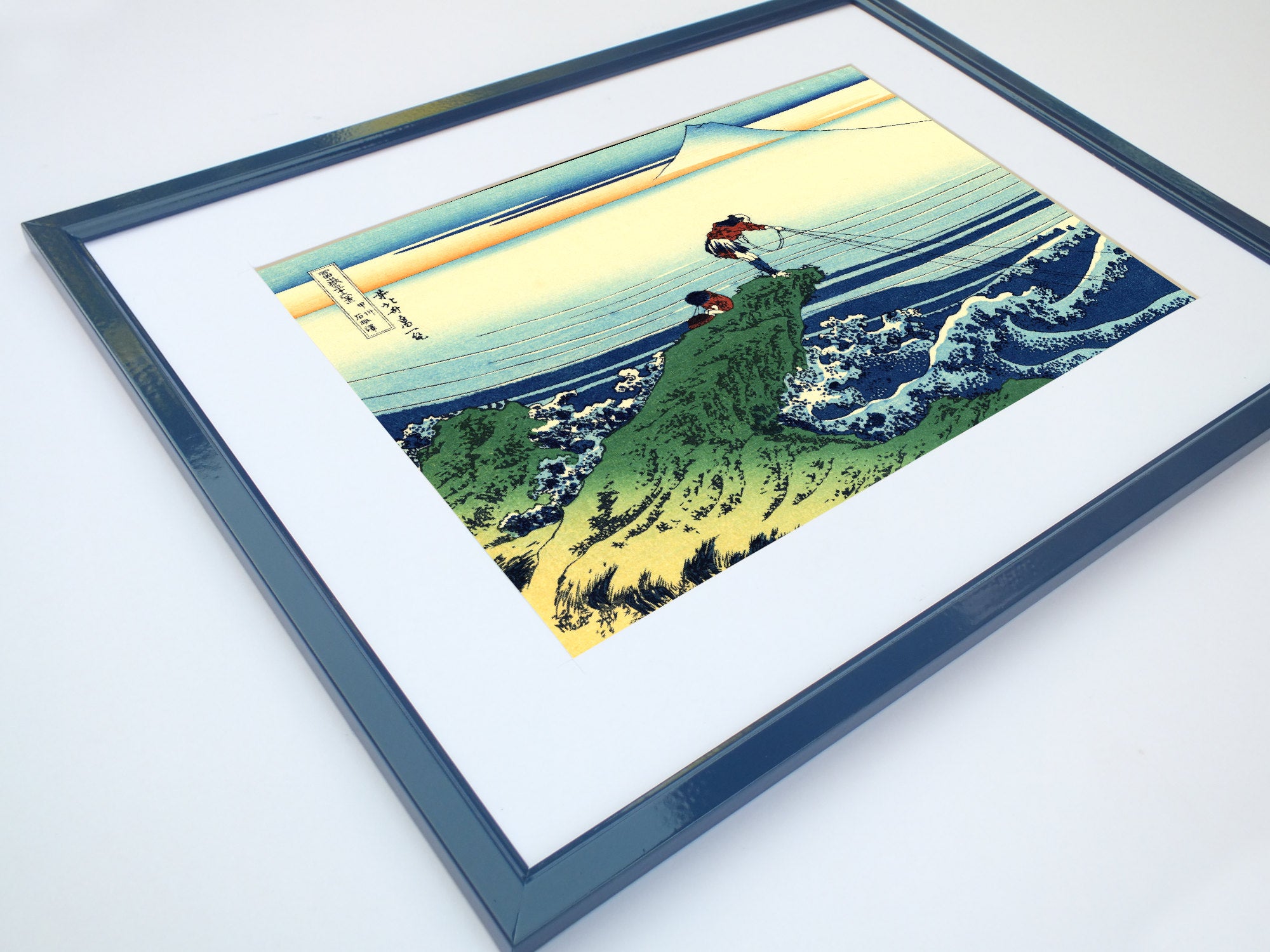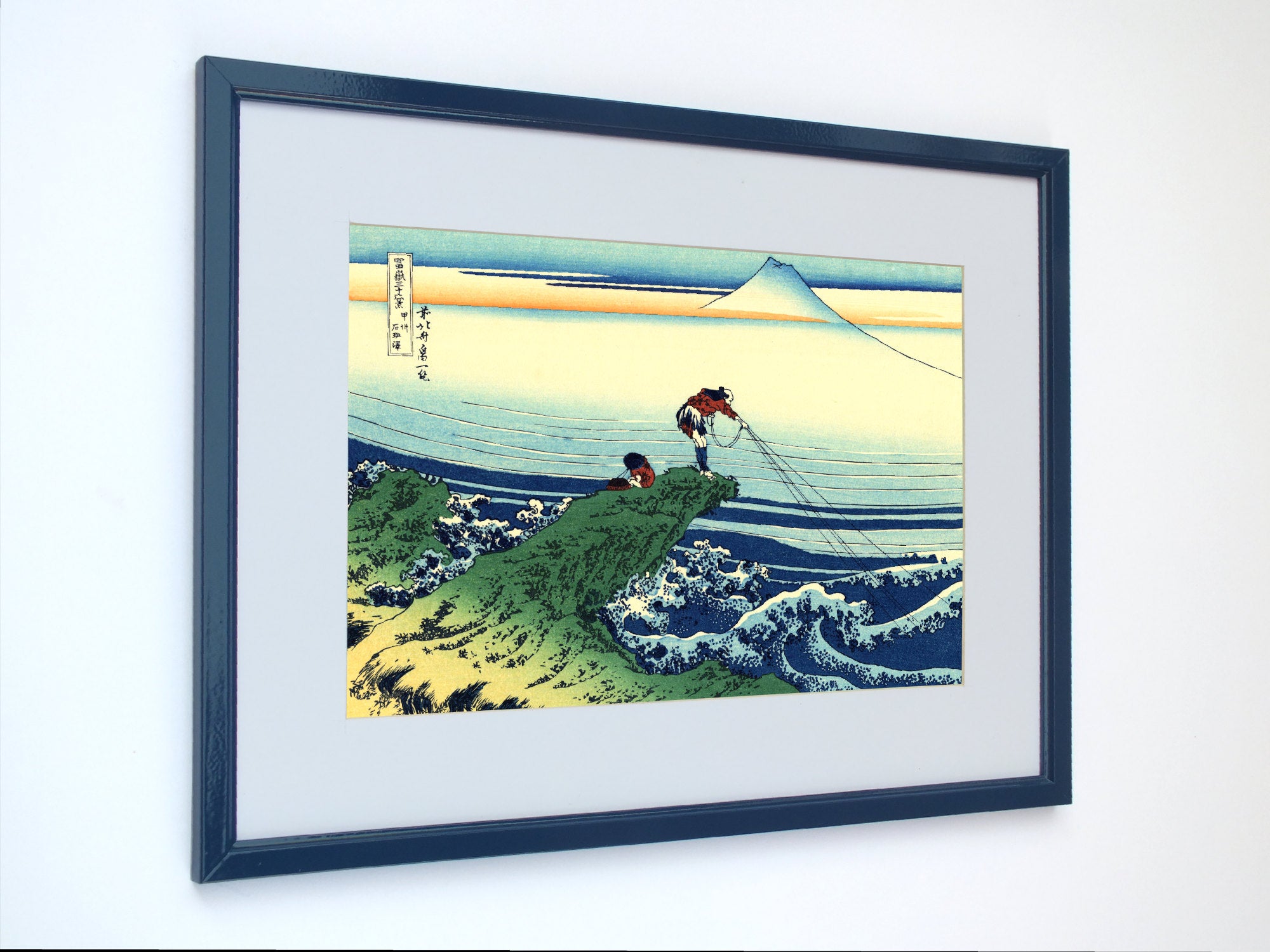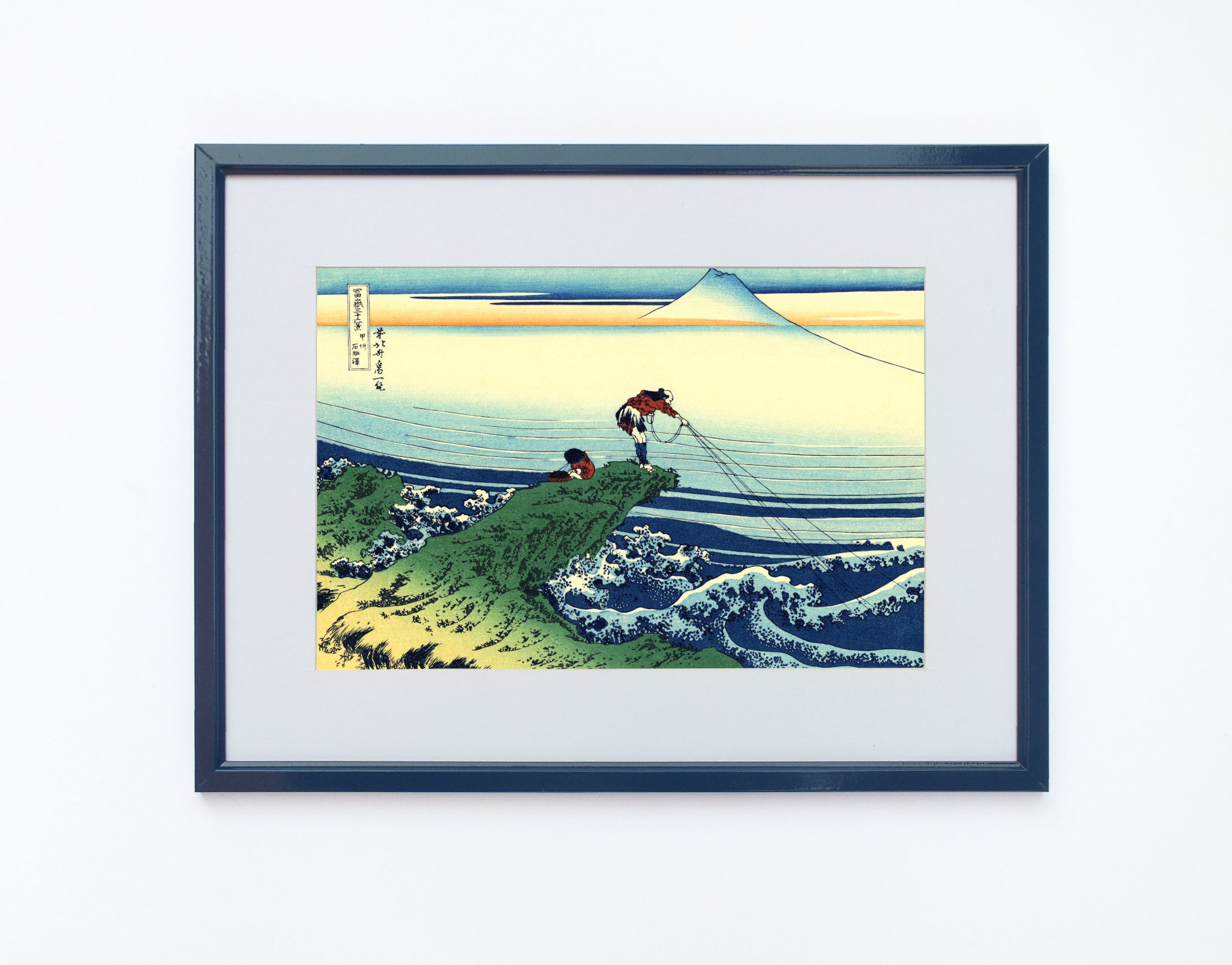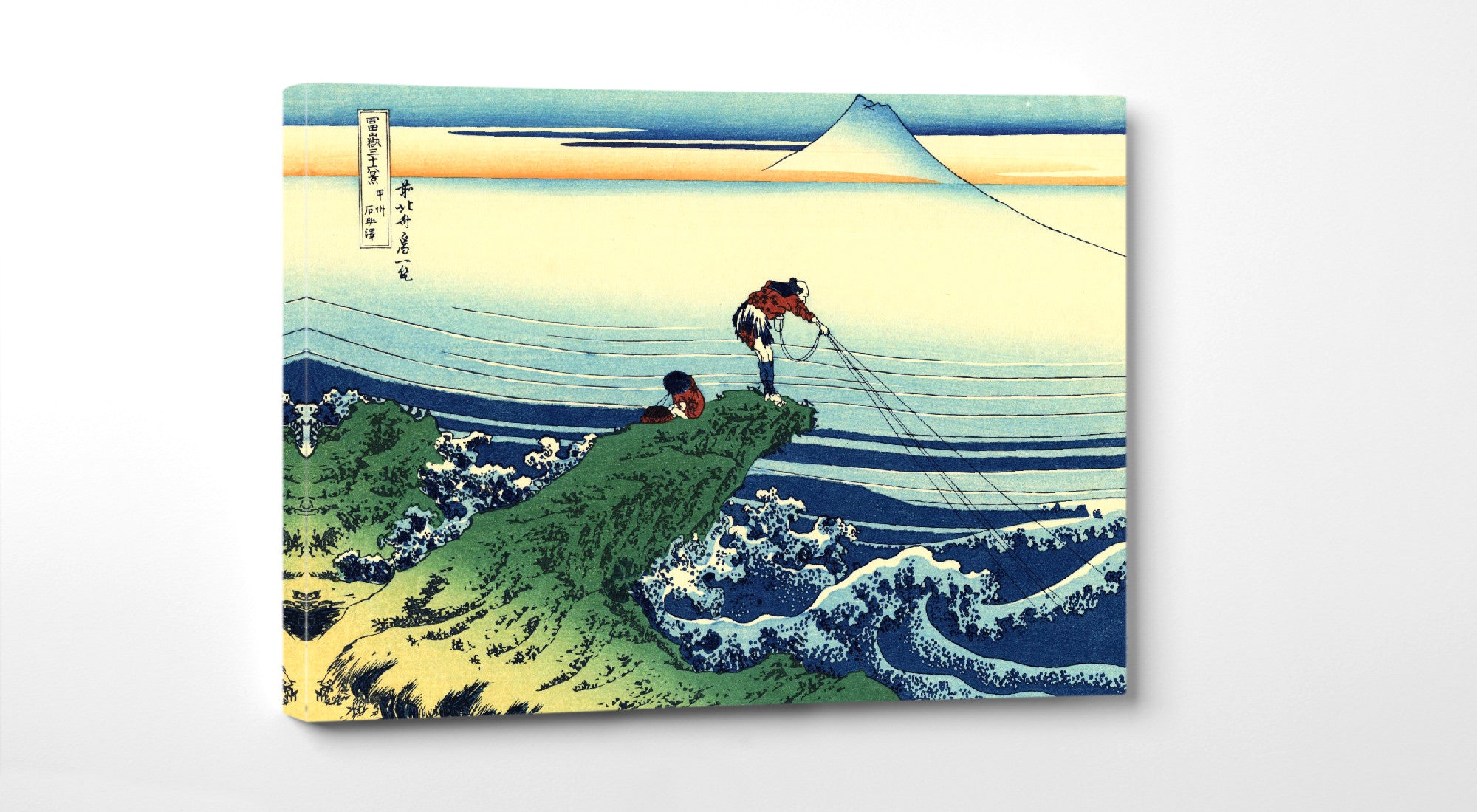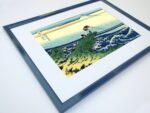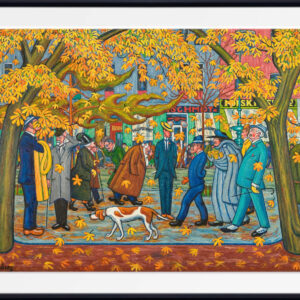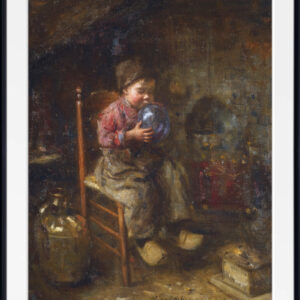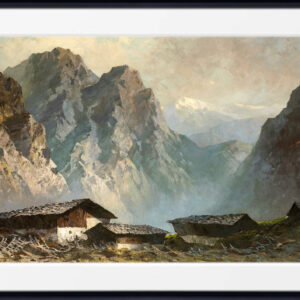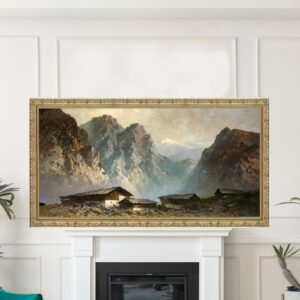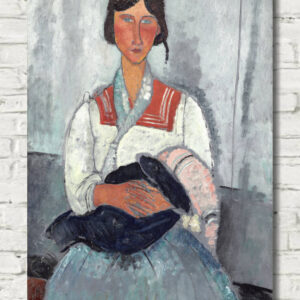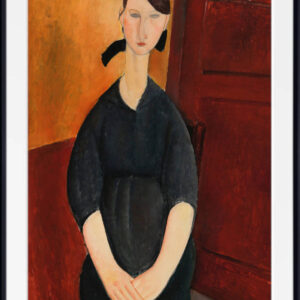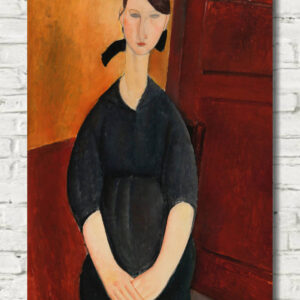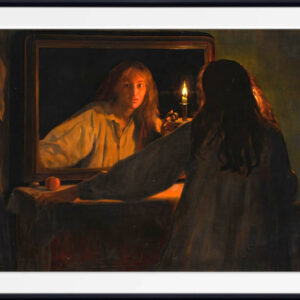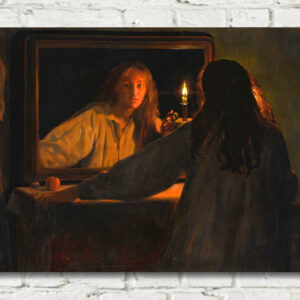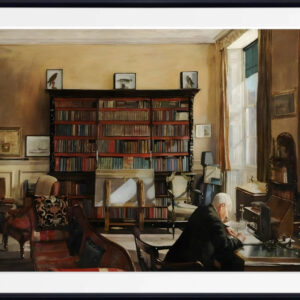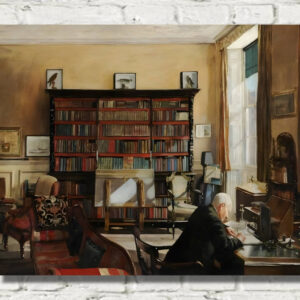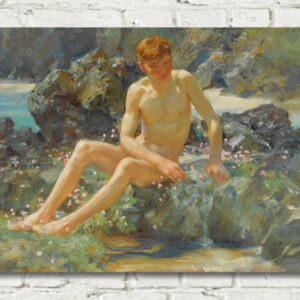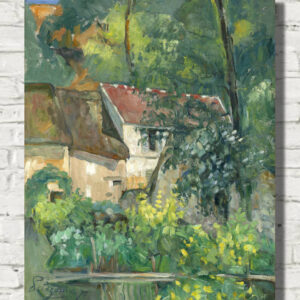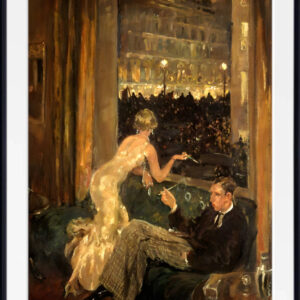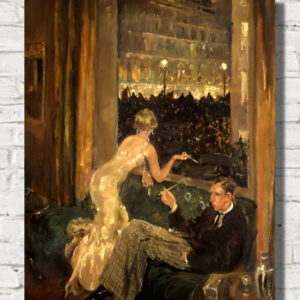36 Views of Mount Fuji, Kajikazawa in Kai Province, Katsushika Hokusai, Japanese Print
The painting depicts a man standing on the edge of a rocky beach gouged by rough waves, pulling a net, and a boy watching over a basket of fish at his side.
At first glance, it seems that the raging waves of the sea are striking on the shore. But Kai Province, the current place of Yamanashi Prefecture, is inland.
Fuji River in the picture, the two rivers (Kamanashi River and Fuefuki River) join together shortly before this point, and a large quantity of water current stream. The fishermen standing on the rock is absolutely still, whereas water beats against rocks and bubbles express energy. It’s really contrastive opposite ukiyo-e print. Both the ridgeline of Mt. Fuji, and the rock and fishing line, create triangles and become a geometric pattern.
Katsushika Hokusai was a Japanese artist, ukiyo-e painter and printmaker of the Edo period. Born in Edo (now Tokyo), Hokusai is best known as author of the woodblock print series Thirty-six Views of Mount Fuji (富嶽三十六景 Fugaku Sanjūroku-kei, c. 1831) which includes the internationally iconic print, The Great Wave off Kanagawa.
Hokusai created the “Thirty-Six Views” both as a response to a domestic travel boom and as part of a personal obsession with Mount Fuji. It was this series, specifically The Great Wave print and Fine Wind, Clear Morning, that secured Hokusai’s fame both in Japan and overseas. As historian Richard Lane concludes, “Indeed, if there is one work that made Hokusai’s name, both in Japan and abroad, it must be this monumental print-series”. While Hokusai’s work prior to this series is certainly important, it was not until this series that he gained broad recognition.
All prints are made using archival art stocks and UV pigment inks to give up to 200 years life. Choose from unframed, framed and mounted and canvas panel options.

